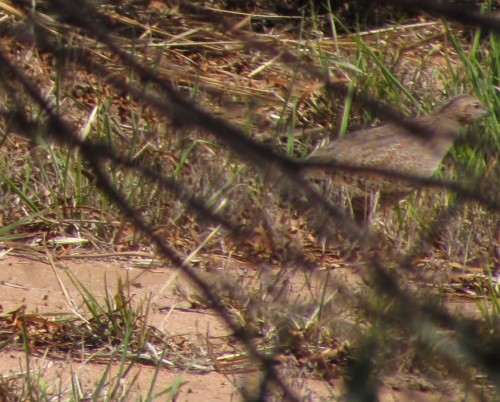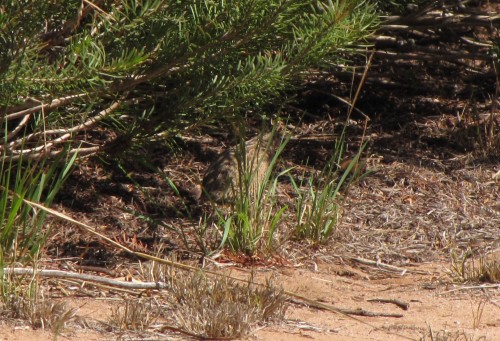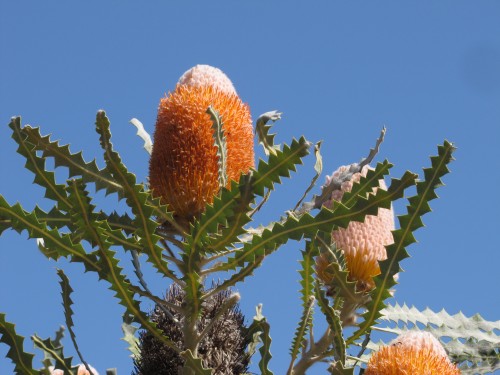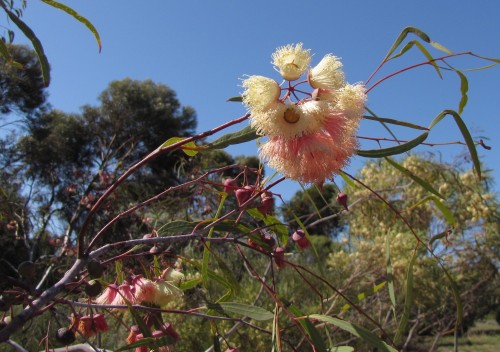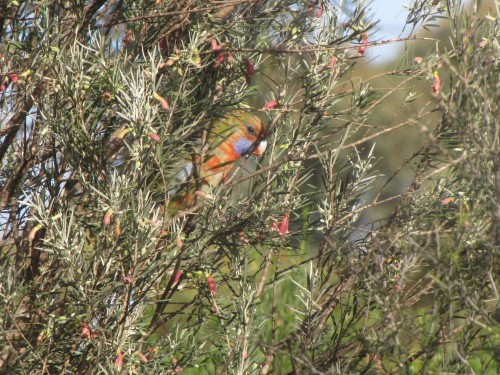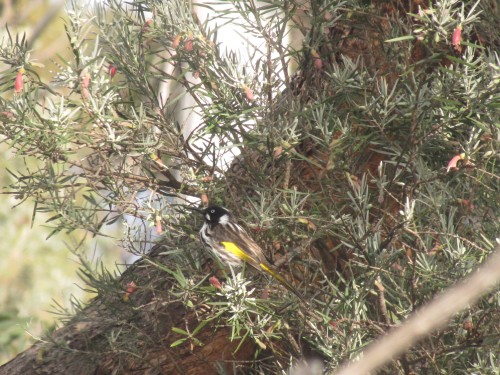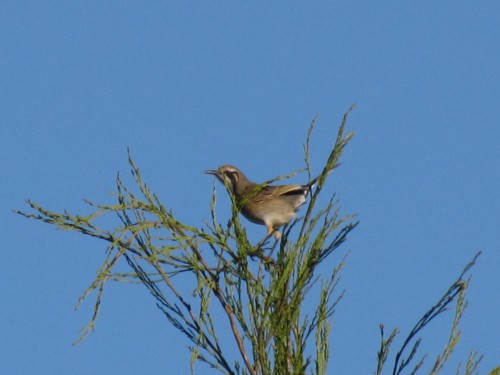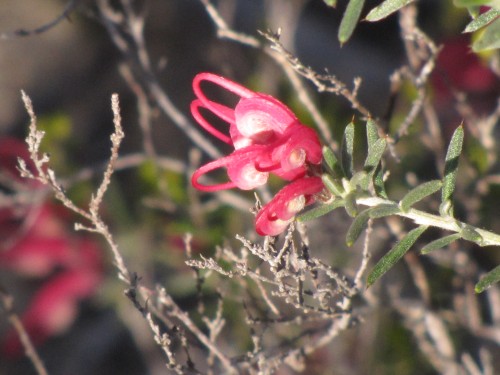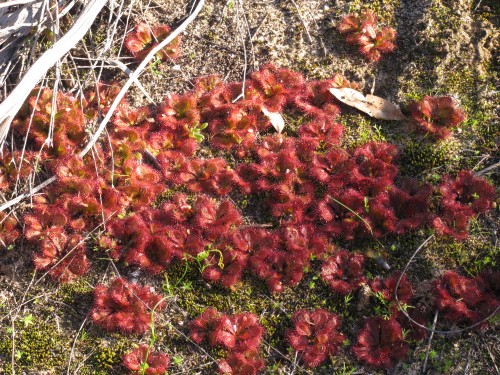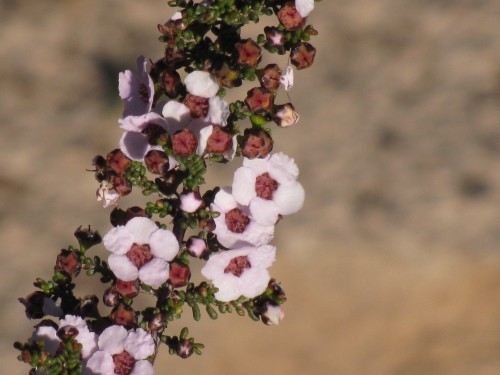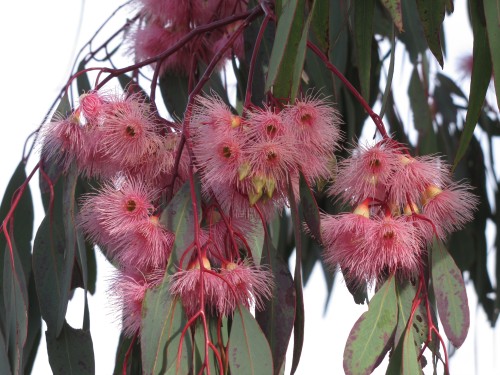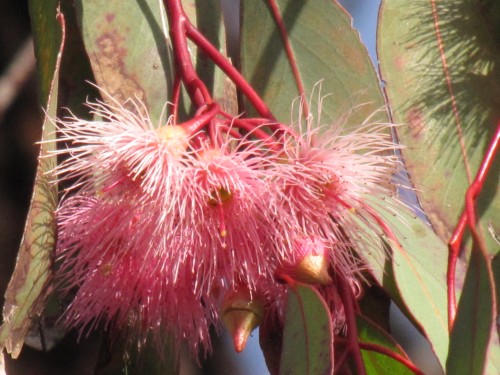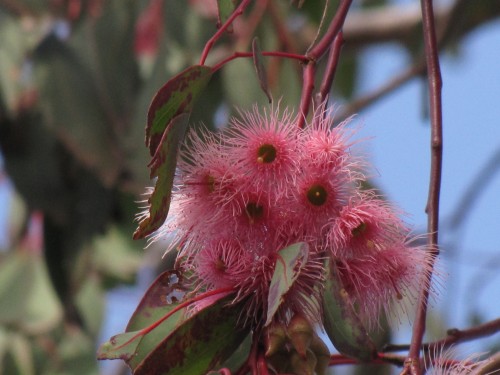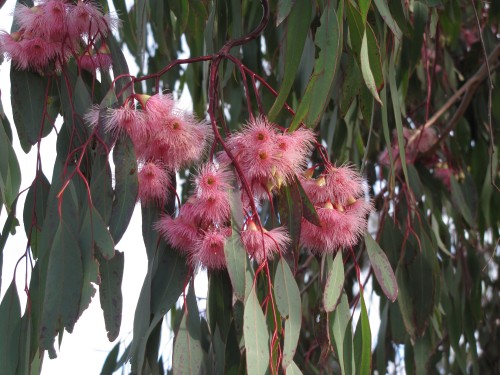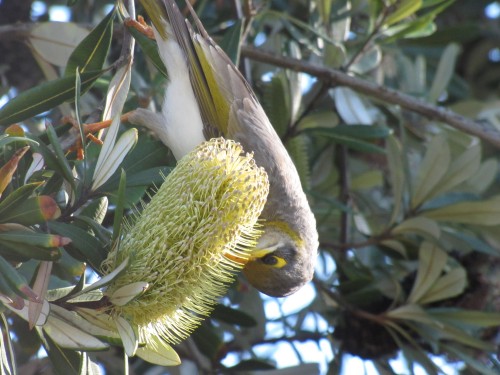Calling up a Brown Quail
Yesterday was my wife’s birthday.
To celebrate we went out to lunch with friends, and then drove south to Wellington on the River Murray. After crossing the river on the ferry we drove the short distance to the Pangarinda Botanic Gardens (formerly known as the Pangarinda Arboretum). My wife enjoys exploring places where native Australian plants are the feature. You can check out her site about Australian plants here.
We found a shady spot in the middle of the gardens, complete with a table and seats. The garden all around us was alive with birds, especially dozens of New Holland Honeyeaters. We also saw White-browed Babblers, Red Wattlebirds and Little Wattlebirds, along with dozens of Tree Martins soaring on the breeze hawking for insects (photos to come in a few days’ time).
As we were having a cuppa and some delicious birthday cake, we heard an interesting call nearby. It wasn’t long before we spotted a quail-like bird skulking through the garden about 50 metres away. I checked my bird app on my phone and immediately recognised the call of the Brown Quail. I knew that I didn’t have a photo of this species, so I set off in pursuit. I actually managed only two photos which I have cropped and shown here today. They are not brilliant photos, but they are the best I have.
This is the first time I have seen this species, even though they are relatively widespread in the region where I live. They can be quite shy birds, hiding in grasses and bushy areas. I guess that they have found these gardens to their liking and are getting used to people being around quite often. I was amused when my friend Keith started imitating the call – and both birds answered him from nearby. They also answered the call from the app on my phone. Neither Keith’s call, nor that from my phone made them come closer to investigate. At one point one of them did fly low over the table where we were sitting, but it went straight into a bushy area and out of sight.
As far as I can tell from my memory and records, this sighting is a “lifer“, that is, it is the first time in my life I have seen this species.
Further reading (click on the title):
- Mallee Native Plants – my wife’s site about Australian plants
- Pangarinda Arboretum – some flower photos are featured in this post
- Birds and plants of Pangarinda Arboretum – more photos of the beautiful plants in these gardens
- Spotted Nightjar at Pangarinda
- Red-capped Robin at Pangarinda – featuring possibly my favourite photos of any bird
Below I have included several flower photos taken yesterday.
Feeding Adelaide Rosellas
Last weekend we were having breakfast in our sun-room when four Adelaide Rosellas flew into one of the bushes in our garden, an Eremophila youngii (see photo above). I had the camera ready for many minutes but they would not come out into full sunlight and the above photo is the best I captured on this occasion. Just one bird is seen peeking out to see what was happening around it. The others were hidden in the foliage, busy feeding on the nectar in the flowers.
The Adelaide Rosella is now a frequent visitor to our garden. It is a race of the widespread Crimson Rosella and confined to the Adelaide region, Mt Lofty Ranges and mid-north of South Australia. Its occurrence here in Murray Bridge is a relatively recent extension of that range.
Parrots occurring in our garden in Murray Bridge include:
- Adelaide Rosella (regular visitor, possibly breeding)
- Crimson Rosella (occasional)
- Eastern Rosella (regular)
- Mallee Ringneck (resident breeding)
- Galah (resident breeding)
- Rainbow Lorikeet (regular)
- Purple-crowned Lorikeet (regular)
- Musk Lorikeet (occasional)
- Budgerigar (rare)
- Sulphur-crested Cockatoo (rare)
- Little Corella (occasional)
- Yellow-tailed Black-cockatoo (once only)
- Cockatiel (occasional)
- Red-rumped Parrot (occasional)
Over the years we have lived here we have planted many native Australian plants, not only for their attractiveness when they flower, but also to attract our native wildlife, especially the birds. We have quite a few eremophilas, grevilleas and correas as well as many others. The particular bush shown in the photo has flowers on it for much of the year so the rosellas and honeyeaters head for it on a daily basis. Below is another photo of the same bush, this time with a New Holland Honeyeater having a feed.
Further reading:
- Get out of my patch
- Red wattlebird in Eremophila bush
- Mallee Native Plants Nursery – my wife’s site about Australian plants
Tawny-crowned Honeyeater at Monarto CP
A few days ago my wife and I took advantage of a lovely sunny winter’s day. We’ve had some very gloomy overcast weather in the last month or so, and some sunshine was an event to celebrate. We went for a drive to Monarto Conservation Park which is about a 15 minute drive from our home in Murray Bridge. Monarto CP is about 60km south east of Adelaide in South Australia.
Mind you, the sun may have been shining, and there were no clouds in the sky, and we were well rugged up, but the breeze was still chilly. Never mind, we packed the folding chairs, a Thermos of hot water, some tea bags and some biscuits for afternoon tea. We were prepared.
Before indulging in our treats we went on the walking trail through the park. This is an easy, almost level sandy track through several different habitats. Despite the recent poor weather we were delighted to see so many native plants in flower. I have included a few photos below. While my wife has a good working knowledge of our native birds, her main interest is in the native plants (you can read about her interest on her site here).
I have found over the years that birding in the Monarto Conservation Park can be rather hit or miss. Sometimes the birds can be singing and busily feeding and flying around. On other occasions the bird life can be quiet and inactive. Much of this is due to two main factors: weather conditions and what is flowering.
On this occasion there seemed to be a great deal of activity but, wouldn’t you know it – the birds were not showing themselves all that much. In fact, I only managed reasonable – certainly not brilliant – photos of one species: the Tawny-crowned Honeyeater as shown in the photo above. I should be pleased; the photos taken were the first I have managed of this species.
This honeyeater is a widespread species of southern Australia, from coastal NSW and Tasmania, much of Victoria, southern South Australia and south-western Western Australia. Its preferred habitats include mallee, heathlands, eucalyptus woodlands and street trees. It can easily be confused with the similar looking Crescent Honeyeater – which initially I did.
Further reading:
- Crescent Honeyeater
- An afternoon walk in Monarto Conservation Park
- Birds of Monarto Conservation Park
Bird list:
- Spiny-cheeked Honeyeater
- Red Wattlebird
- Mallee Ringneck parrot
- Silvereye
- Grey Shrike-thrush
- Australian Magpie
- Southern Scrub-robin
- Grey Currawong
- Weebill
- Grey Fantail
- New Holland Honeyeater
- Brown-headed Honeyeater
- Grey Butcherbird
- Tawny-crowned Honeyeater
- Little Raven
- Willie Watail
- Black-faced Cuckoo-shrike
- Shy heathwren
Red Wattlebirds and Eucalypts
Red Wattlebirds are one of the largest species of honeyeater in Australia. They are also one of the more common species of honeyeater over their range which is southern Australia.
The Red Wattlebird is a resident breeding species in our garden and on our five acre block of mallee scrub here in Murray Bridge, South Australia. We see them every day and we hear them calling throughout the day. During the warmer days they are frequent visitors to our bird baths, bullying most other species away from the water.
Over recent days we have been observing several wattlebirds feeding on the flowers of the Eucalyptus sideroxylon rosea tree in our drive-way. The common name of the tree is Red Iron-bark. I tried to get a photo of one of them feeding on the flowers but they always flew away before I could sneak up within camera range.
So – instead of getting frustrated by my lack of photos of the feeding birds, I have decided to show some photos of the flowers of the trees for your enjoyment.
Further reading:
Time for a sweet break
The various species of banksias are often well favoured by our native birds and especially our many honeyeater species. Banksias are often bushes or small trees with dense foliage, ideal for many of our smaller birds like finches, thornbills and the like because the leaves provide shelter from predators such as hawks and eagles. The dense leaf cover also provides ideal protection for nesting sites.
Banksias are also good producers of nectar in their many large flowers. The flower shown in the photo above is on the smaller side; many are much bigger. The Yellow-throated Miner, one of the many honeyeater species in Australia, obviously loves this one. The photo was taken in the grounds of the Western Plains Zoo in Dubbo, New South Wales.
